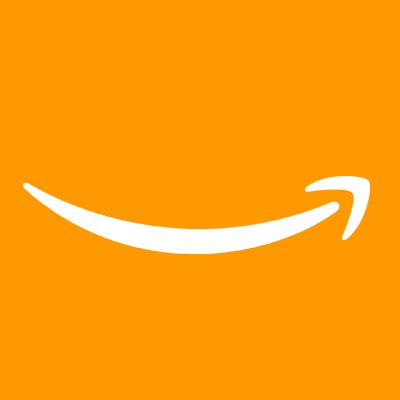Amazon.com announces Q1 2020 results
Amazon has announced financial results for its first quarter ended March 31, 2020.
- Operating cash flow increased 16% to $39.7 billion for the trailing twelve months, compared with $34.4 billion for the trailing twelve months ended March 31, 2019.
- Free cash flow increased to $24.3 billion for the trailing twelve months, compared with $23.0 billion for the trailing twelve months ended March 31, 2019.
- Free cash flow less principal repayments of finance leases and financing obligations decreased to $14.3 billion for the trailing twelve months, compared with $15.1 billion for the trailing twelve months ended March 31, 2019.
- Free cash flow less equipment finance leases and principal repayments of all other finance leases and financing obligations decreased to $11.7 billion for the trailing twelve months, compared with $11.8 billion for the trailing twelve months ended March 31, 2019.
- Common shares outstanding plus shares underlying stock-based awards totaled 513 million on March 31, 2020, compared with 507 million one year ago.
- Net sales increased 26% to $75.5 billion in the first quarter, compared with $59.7 billion in first quarter 2019. Excluding the $387 million unfavorable impact from year-over-year changes in foreign exchange rates throughout the quarter, net sales increased 27% compared with first quarter 2019.
- Operating income decreased to $4.0 billion in the first quarter, compared with operating income of $4.4 billion in first quarter 2019.
- Net income decreased to $2.5 billion in the first quarter, or $5.01 per diluted share, compared with net income of $3.6 billion, or $7.09 per diluted share, in first quarter 2019.
“From online shopping to AWS to Prime Video and Fire TV, the current crisis is demonstrating the adaptability and durability of Amazon’s business as never before, but it’s also the hardest time we’ve ever faced,” said Jeff Bezos, Amazon founder and CEO. “We are inspired by all the essential workers we see doing their jobs — nurses and doctors, grocery store cashiers, police officers, and our own extraordinary frontline employees. The service we provide has never been more critical, and the people doing the frontline work — our employees and all the contractors throughout our supply chain — are counting on us to keep them safe as they do that work. We’re not going to let them down. Providing for customers and protecting employees as this crisis continues for more months is going to take skill, humility, invention, and money. If you’re a shareowner in Amazon, you may want to take a seat, because we’re not thinking small. Under normal circumstances, in this coming Q2, we’d expect to make some $4 billion or more in operating profit. But these aren’t normal circumstances. Instead, we expect to spend the entirety of that $4 billion, and perhaps a bit more, on COVID-related expenses getting products to customers and keeping employees safe. This includes investments in personal protective equipment, enhanced cleaning of our facilities, less efficient process paths that better allow for effective social distancing, higher wages for hourly teams, and hundreds of millions to develop our own COVID-19 testing capabilities. There is a lot of uncertainty in the world right now, and the best investment we can make is in the safety and well-being of our hundreds of thousands of employees. I’m confident that our long-term oriented shareowners will understand and embrace our approach, and that in fact they would expect no less.”
COVID-19
What we are doing for employees
- Our top concern is ensuring the health and safety of our employees and contractors around the world. We made over 150 significant process changes in our operations network and Whole Foods Market stores to help teams stay healthy — and we conduct daily audits of the measures we’ve put into place.
- We have procured 100 million face masks and are requiring that they be worn by all associates, drivers, and support staff in our operations network. We purchased more than 1,000 thermal cameras and 31,000 thermometers, which we are using to conduct mandatory daily temperature checks for employees and support staff throughout our operations sites and Whole Foods Market stores.
- A team of Amazonians — from research scientists and program managers to procurement specialists and software engineers — has moved from their normal day jobs to a dedicated team working to build incremental testing capacity. The team is building its first lab and has begun a pilot to test front-line employees. We’re not sure how far we will get in the relevant timeframe, but we think it’s worth trying, and we stand ready to share anything we learn.
- In March and April, we announced plans to and have now hired 175,000 people in our fulfillment and delivery network in response to increased customer demand and to assist existing employees. We are happy to welcome these new hires to our team and are continuing to hire.
- In March, we increased pay for hourly employees by $2/hour in the U.S. and Canada, £2/hour in the U.K., and €2/hour in many European countries. We also doubled the regular hourly base pay for overtime hours worked — a minimum of $34 an hour in the U.S. — an increase from time and a half. Our investment in increased pay for our hourly employees and partners during COVID-19 will be nearly $700 million through May 16.
What we are doing for customers
- We’re prioritizing the stocking and delivery of essential items to ensure the fastest delivery of household staples, medical supplies, and other critical products.
- We’re acting aggressively to help protect customers from bad actors and have removed over one million offers from our stores due to COVID-based price gouging. We’ve suspended more than 10,000 selling accounts globally for violating our fair-pricing policies.
- We’re working hard to increase order capacity for Prime Now, Amazon Fresh, and Whole Foods Market. We’ve expanded Whole Foods Market grocery pickup from roughly 80 stores to more than 150, adjusted store hours for select locations to focus exclusively on fulfilling online grocery orders during certain times, and have made it easier for customers to see when the next delivery window is available on the Prime Now, Amazon Fresh, and Whole Foods Market homepages.
- We’ve implemented additional safety measures within our Whole Foods Market stores, including providing plexiglass barriers between cashiers and customers at checkout, rolling out enhanced cleanliness and sanitation protocols, and enforcing social distancing guidelines. Our Whole Foods Market locations are open to seniors one hour before opening the store to the general public, and we are reserving the first hour of grocery pickup at select Whole Foods Market locations for seniors.
- Alexa is helping customers stay informed and connected, and can now answer tens of thousands of questions related to COVID-19. We’re working to provide accurate and timely information from official government and news sources, globally. Alexa also provides an experience that helps customers in Brazil, Canada, India, Japan, Mexico, and the U.S. check their risk level for COVID-19. Customers can ask, “Alexa, what do I do if I think I have COVID-19?” or “Alexa, what do I do if I think I have coronavirus?” Alexa then asks a series of questions about the person’s symptoms and possible exposure and provides guidance sourced from local health authorities.
- To support third-party sellers in Amazon’s stores, many of whom are small and medium-sized businesses, we paused Amazon Lending loan repayments from March 26 to April 30. In recent weeks, we also waived one month of fees for long-term storage, Strategic Account Services account management, and the Launchpad program, as well as two weeks of inventory storage fees.
- Amazon is supporting small businesses by partnering with American Express and its Stand for Small initiative, providing free use of business tools that help with virtual communication and collaboration, such as Amazon Chime, Amazon WorkDocs, and Amazon WorkSpaces, as well as enabling small businesses to use the cloud at no charge for 12 months with AWS Free Tier. We’re also giving complimentary access to training and educational tools from the Amazon Small Business Academy to help entrepreneurs learn how to build their businesses online.
- AWS is helping healthcare workers, medical researchers, scientists, and public health officials working to understand and fight COVID-19 by providing a centralized repository of curated, up-to-date, pre-processed, and publicly-readable datasets focused on the spread and characteristics of the virus. The AWS COVID-19 data lake, which includes data sets from Johns Hopkins University, Definitive Healthcare, Carnegie Mellon’s Delphi Research Group, and other sources, is available for anyone researching, tracking, deploying vital resources, or developing other helpful solutions and applications to combat COVID-19.
- AWS is supporting the White House’s COVID-19 High Performance Computing Consortium, providing computing resources to advance research on diagnosis, treatment, and vaccines.
- Customers are using AWS to lessen the impact that COVID-19 has on families, communities, and businesses. Examples include:
- The New York City COVID-19 Rapid Response Coalition is using a conversational agent, which is running on AWS, to enable at-risk, elderly New Yorkers to receive accurate, timely information about medical needs.
- The Los Angeles Unified School District is using AWS to power a new call center that is fielding IT questions, providing remote support, and enabling staff to answer calls around remote learning for 700,000 students.
- Volunteer Surge, a nonprofit consortium, is running its online training platform on AWS to recruit, train, and deploy one million volunteer health workers.
- The World Health Organization is using AWS to build large-scale data lakes, aggregate epidemiological country data, rapidly translate medical training videos into different languages, and help global healthcare workers better treat patients.
- Cerner, a global healthcare technology company, is compiling de-identified patient data to help COVID-19 researchers and is leveraging AWS to secure and store critical information. The data is available free of charge and will support research, vaccine development, and new treatment options, allowing organizations to share information and accelerate understanding of the virus.
- In England, the National Health Service is using AWS to analyze hospital occupancy levels, emergency room capacity, and patient wait times in order to help decide where best to allocate resources.
- AWS is helping Kentucky and West Virginia authorities address the surge in call volumes to unemployment call centers by transitioning from legacy technology that often required agents to work in the states’ offices to Amazon Connect which enables staff to work remotely via the AWS Cloud.
- Origin Energy, Australia’s largest integrated energy retailer, is using Amazon Connect to operate its cloud-based contact center and successfully manage inbound calls by enabling their contact center agents to work remotely during the COVID-19 crisis.
- AWS is helping the state of Rhode Island address a surge in unemployment insurance applications —10 times the volume their legacy system could typically handle — by powering the Department of Labor and Training’s website and online application portal.
- AWS is helping schools around the world quickly deploy and transition to online learning through its EdTech customers and partners. In Egypt, the Ministry of Education and CDSM Thinqi are standing up instant access to online learning content, where 22 million K-12 students are able to continue their education in the midst of COVID-19; and in India, EdTech startup Impartus is launching virtual classrooms for more than 530,000 students — the online equivalent of 13,000 physical classrooms. AWS is also working with Blackboard, the largest education technology and services company in the world, enabling them to scale to 50x their usual capacity within a 24-hour timeframe to meet the global surge in demand of daily users for their virtual teaching and learning platform.
- In collaboration with Salesforce, AWS is participating in the “Salesforce Care” campaign, a program to onboard up to 300 customers, like HCA Healthcare and Providence Health & Services, to help them quickly stand-up call center capacity to handle the spike in demand from their patients.
What we are doing for communities
- Using our network of Amazon Flex drivers, we’re partnering with food banks across the U.S. to donate delivery services of groceries to serve six million meals through the end of June. We’ve delivered 427,000 pounds of groceries, representing 336,000 meals.
- We’ve partnered with a Seattle catering company to distribute more than 73,000 meals to over 2,700 elderly and medically-vulnerable residents in Seattle and King County during the outbreak.
- We’re donating $5 million in Amazon devices to support healthcare workers, patients, schools, teachers, and communities around the globe that have been impacted by COVID-19.
- We’ve provided $10 million in funding to provide relief to more than 800 small businesses in Seattle and the Puget Sound through cash grants and free rent as part of our Neighborhood Small Business Relief Fund.
- We have donated 12,200 laptops to students across the U.S. and are making online computer science resources, including exam prep, available at no cost to students, parents, and teachers through Amazon Future Engineer.
- We committed more than €21 million to relief organizations across Europe to support those most affected by COVID-19.
- In partnership with the United States Department of Agriculture we’ve expanded the list of states where Supplemental Nutrition Assistance Program (SNAP) benefits can be used online, which now includes Alabama, Arizona, California, Florida, Iowa, Kentucky, Nebraska, New York, Oregon, and Washington, with additional states to come online soon.
- With the AWS Diagnostic Development Initiative, a program to support customers working to bring more accurate diagnostic solutions to market for COVID-19, we’re committing $20 million to accelerate this work and help our customers harness the cloud to tackle this challenge.
Business Highlights
Shopping and Entertainment
- Amazon ranked #1 in the 2019 American Customer Satisfaction Index Internet Retail Category and has been ranked in the top 10 for the past 11 years. In the U.K., the Institute of Customer Service named Amazon as the company with the best customer service score for the past decade.
- Prime Video launched Prime Video Cinema in the U.S., the U.K., and Germany. Prime Video Cinema is a premium movie rental offering that allows customers to stream in-theater movies at home, including titles such as Birds of Prey, Emma, The Invisible Man, Onward, and Trolls World Tour.
- Customers in the U.S., the U.K., and Germany can now rent or buy hundreds of thousands of video titles directly from the Prime Video app on Apple iOS 12 devices and the Apple TV Gen 4+, including new release movies, award-winning TV shows, and Oscar-nominated movies.
- Prime Video premiered several new Amazon Original series including the reality competition Making the Cut, hosted and executive produced by Heidi Klum and Tim Gunn; The Forgotten Army in India; Love Island in France; Celebrity Hunted in Italy; and the docuseries The Test: A New Era for Australia’s Team in Australia.
- Prime Video and the National Football League (NFL) announced a multi-year agreement to renew their partnership to deliver a live digital stream of 11 Thursday Night Football games as well as exclusive global streaming rights to one additional regular season game. All NFL games on Prime Video are available at no extra cost to Prime members.
- Amazon launched Amazon Go Grocery in Seattle, the first grocery store to offer Just Walk Out Shopping. The store’s checkout-free experience is enabled by the same Just Walk Out Technology used in 25 Amazon Go stores across the U.S. In addition, Amazon is now offering its Just Walk Out Technology to retailers for use in their stores, allowing more shoppers to enjoy the convenience of taking what they want and leaving without stopping to check out.
- Amazon launched Amazon.nl and a new Prime program for the Netherlands marketplace. Amazon Prime includes unlimited free shipping, Prime Video, Twitch Prime, and Amazon Photos.
- Amazon announced that more than 15,000 small and medium-sized businesses selling in Amazon’s stores in the U.S. surpassed $1 million in sales in 2019. Additionally, third-party sellers sold more than 700 million items that shipped with Prime Free One-Day Delivery or faster in the U.S. in 2019.
Devices and Alexa
- Alexa is available on even more devices including TV, mobile, and auto and is now available on select LG and Samsung Smart TV 2020 models and the new OnePlus 8 mobile phone. Additionally, BMW customers in the U.S., and MINI customers in the U.S., France, Italy, Spain, and Austria can now access Alexa on select models.
- Amazon introduced a new speaking style for Alexa skills, enabling U.S. developers to build more natural long-form content experiences by adding conversational pauses to Alexa’s speech when reading articles or blogs.
- Fire TV’s content catalog continues to grow internationally with new apps, including Disney+, available on Fire TV and Fire Tablet devices in the U.K., France, Germany, Italy, and Spain.
- Ring launched several new products and features, including two Ring Video Doorbells and its next-generation Ring Chime and Ring Chime Pro, in the U.S., the U.K., Canada, Australia, and New Zealand. Additionally, Ring launched mandatory two-step verification for all users, along with the ability to opt out of personalized advertising.
- Amazon launched Blink Mini, a new compact indoor smart security camera that works with Alexa in the U.S., the U.K., Canada, Germany, and France.
Amazon Web Services
- AWS announced the opening of the AWS Europe (Milan) and AWS Africa (Cape Town) Regions. AWS now spans 76 Availability Zones within 24 geographic regions, with announced plans for nine more Availability Zones and three more AWS Regions in Indonesia, Japan, and Spain.
- AWS announced the general availability of Amazon Detective, a security service that makes it easy for customers to conduct faster and more efficient investigations into security issues across their AWS workloads. Amazon Detective automatically collects log data from a customer’s resources and uses machine learning, statistical analysis, and graph theory to build interactive visualizations that help customers analyze, investigate, and quickly identify the root cause of potential security issues or suspicious activities.
- AWS announced the general availability of Amazon Keyspaces (for Apache Cassandra), a scalable, highly available, and fully managed database service for Cassandra workloads. Amazon Keyspaces supports the same application code, Apache 2.0 licensed drivers, and developer tools that customers running Cassandra workloads use today. With Amazon Keyspaces, customers can easily migrate on-premises Cassandra workloads to the cloud, without having to provision, configure, and operate servers or large Cassandra clusters, or needing to manually add or remove nodes or rebalance partitions as traffic scales up or down.
- AWS announced Amazon AppFlow, a fully managed service that provides an easy, secure way for customers to create and automate bidirectional data flows between AWS and SaaS applications — such as Salesforce, Slack, Infor Nexus, Marketo, ServiceNow, Trend Micro, and Zendesk — without writing custom integration code. Amazon AppFlow also works with AWS PrivateLink to route data flows through the AWS network instead of over the public Internet to provide even stronger data privacy and security. With Amazon AppFlow, customers can bring together and manage petabytes, even exabytes, of data spread across all of their applications without having to develop custom connectors or manage underlying API and network connectivity.
- AWS announced the general availability of Amazon Augmented Artificial Intelligence (Amazon A2I), a fully managed service that makes it easy to add human review to machine learning predictions to enhance model and application accuracy by continuously identifying and improving low confidence predictions. Human review for model predictions can be added to new or existing applications using reviewers from Mechanical Turk, third party vendors, or a customer’s own employees.
- AWS helped power the NFL’s first ever remote draft — the most watched ever, reaching more than 55 million viewers total. Through all seven rounds of the three-day event, AWS ensured that over 100 live feeds ran successfully, creating a seamless experience for the NFL, teams, coaches, players and their families, fans, and everyone watching.
Community and Sustainability
- Amazon launched the first Amazon Future Engineer Teacher of the Year Awards, recognizing teachers working to help students in underserved communities gain the skills they need to build careers in computer science.
- Amazon donated $3.9 million to CodeVA, a Virginia non-profit organization, to expand computer science education for 500,000 students and training for 12,000 teachers in 700 underserved communities across Virginia — with virtual training starting now in light of COVID-19.
- Amazon leveraged its operational expertise and logistics network to provide relief and support to victims across the globe including those impacted by the Australian bushfire crisis, Indonesia’s floods, earthquakes in Puerto Rico, and tornadoes in the Middle Tennessee region. Amazon has donated more than 750,000 relief items to help community partners responding to large-scale natural disasters.
- Amazon announced four new renewable energy projects across the U.S., Europe, and Australia that will support Amazon’s commitment under The Climate Pledge to be net zero carbon by 2040, 10 years ahead of the Paris Agreement. Globally, Amazon has 86 renewable energy projects that have the capacity to generate over 2,300 MW and deliver more than 6.3 million MWh of energy annually.
- Amazon announced its first donation of $10 million to The Nature Conservancy. This first project donation is part of Amazon’s Right Now Climate Fund — a $100 million commitment to protect, restore, and support reforestation projects around the world in collaboration with The Nature Conservancy.
Financial Guidance
The following forward-looking statements reflect Amazon.com’s expectations as of April 30, 2020, and are subject to substantial uncertainty. Our results are inherently unpredictable and may be materially affected by many factors, such as fluctuations in foreign exchange rates, changes in global economic conditions and customer spending, world events, the rate of growth of the Internet, online commerce, and cloud services, and the various factors detailed below. This guidance reflects our estimates as of April 30, 2020 regarding the impact of the COVID-19 pandemic on our operations, including those discussed above, and is highly dependent on numerous factors that we may not be able to predict or control, including: the duration and spread of the pandemic; actions taken by governments, businesses, and individuals in response to the pandemic; the impact of the pandemic on global and regional economies and economic activity, workforce staffing and productivity, and our significant and continuing spending on employee safety measures; our ability to continue operations in affected areas; and consumer demand and consumer spending patterns, as well as the effects on suppliers, creditors, and third-party sellers, all of which are uncertain. This guidance also assumes the impacts on consumer demand and spending patterns, including impacts due to concerns over the current economic outlook, will be in line with those experienced during Q2 to date, and the additional assumptions set forth below. However, it is not possible to determine the ultimate impact on our operations for the second quarter, or whether other currently unanticipated direct or indirect consequences of the pandemic are reasonably likely to materially affect our operations.
Second Quarter 2020 Guidance
- Net sales are expected to be between $75.0 billion and $81.0 billion, or to grow between 18% and 28% compared with second quarter 2019. This guidance anticipates an unfavorable impact of approximately 70 basis points from foreign exchange rates.
- Operating income (loss) is expected to be between $(1.5) billion and $1.5 billion, compared with $3.1 billion in second quarter 2019. This guidance assumes approximately $4.0 billion of costs related to COVID-19.
- This guidance assumes, among other things, that no additional business acquisitions, investments, restructurings, or legal settlements are concluded.
A conference call will be webcast live today at 2:30 p.m. PT/5:30 p.m. ET, and will be available for at least three months at amazon.com/ir. This call will contain forward-looking statements and other material information regarding the Company’s financial and operating results.
These forward-looking statements are inherently difficult to predict. Actual results could differ materially for a variety of reasons, including, in addition to the factors discussed above, the amount that Amazon.com invests in new business opportunities and the timing of those investments, the mix of products and services sold to customers, the mix of net sales derived from products as compared with services, the extent to which we owe income or other taxes, competition, management of growth, potential fluctuations in operating results, international growth and expansion, the outcomes of claims, litigation, government investigations, and other proceedings, fulfillment, sortation, delivery, and data center optimization, risks of inventory management, seasonality, the degree to which the Company enters into, maintains, and develops commercial agreements, proposed and completed acquisitions and strategic transactions, payments risks, and risks of fulfillment throughput and productivity. Other risks and uncertainties include, among others, risks related to new products, services, and technologies, system interruptions, government regulation and taxation, and fraud. In addition, additional or unforeseen effects from the COVID-19 pandemic and the global economic climate may give rise to or amplify many of these risks. More information about factors that potentially could affect Amazon.com’s financial results is included in Amazon.com’s filings with the Securities and Exchange Commission (“SEC”), including its most recent Annual Report on Form 10-K and subsequent filings.
Our investor relations website is amazon.com/ir and we encourage investors to use it as a way of easily finding information about us. We promptly make available on this website, free of charge, the reports that we file or furnish with the SEC, corporate governance information (including our Code of Business Conduct and Ethics), and select press releases, which may contain material information about us, and you may subscribe to be notified of new information posted to this site.
About Amazon
Amazon is guided by four principles: customer obsession rather than competitor focus, passion for invention, commitment to operational excellence, and long-term thinking. Customer reviews, 1-Click shopping, personalized recommendations, Prime, Fulfillment by Amazon, AWS, Kindle Direct Publishing, Kindle, Fire tablets, Fire TV, Amazon Echo, and Alexa are some of the products and services pioneered by Amazon. For more information, visit amazon.com/about and follow @AmazonNews.






